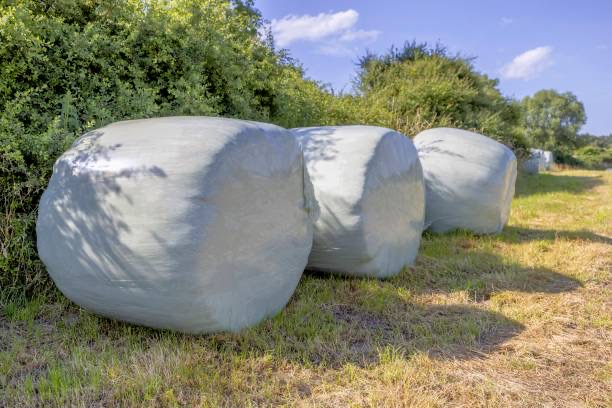In the evolving landscape of Australian agriculture, bale wrap technology has undergone significant advancements, providing farmers with better solutions to store and preserve fodder. With climate challenges, fluctuating feed quality, and increasing sustainability demands, innovations in bale wrapping are helping producers maintain feed quality while reducing waste. These developments are not just about wrapping hay or silage — they’re reshaping how Australian farmers manage feed storage for livestock efficiency and profitability.
Smarter Materials for Better Preservation
One of the most exciting innovations in recent years is the development of advanced polymer films designed to withstand Australia’s harsh conditions. Modern bale wrapping films now feature improved UV stabilisation, critical for farms in sun-intense regions like Queensland and Western Australia. These materials prevent premature degradation, ensuring that stored feed retains its nutritional quality for longer periods.
Additionally, multi-layer co-extruded films offer greater puncture resistance, reducing the risk of spoilage from pests, birds, or machinery handling. This is particularly important in rural areas where wildlife interactions can compromise silage integrity. The result is a longer shelf life for fodder and less wastage during the feeding season.
Efficiency Through Automated Wrapping Systems
Technological integration is revolutionising how bale wrapping is performed. Automated bale wrapping machines — equipped with sensors, programmable settings, and precision control — are streamlining operations on farms of all sizes. For example, in Victoria’s dairy regions, operators can now process more bales per hour with consistent film tension and overlap, minimising operator fatigue and human error.
These systems often feature moisture and density sensors, ensuring each bale is optimally wrapped according to its specific characteristics. This precision not only reduces film usage but also guarantees better oxygen exclusion, which is crucial for silage fermentation quality.
Eco-Friendly Bale Wrap Options Emerging
Sustainability is no longer a side consideration — it’s becoming a primary driver in bale wrap innovation. Manufacturers are now producing biodegradable and recyclable films tailored for Australian environmental standards. In regions like New South Wales, where waste management regulations are tightening, farmers are looking for wrapping solutions that reduce landfill impact without sacrificing performance.
Some suppliers are offering take-back programs, collecting used bale wrap and recycling it into other agricultural products. This closed-loop approach is gaining traction, especially among progressive mixed-farming operations aiming to align with carbon reduction goals.
Adaptation to Australia’s Climate Extremes
Australian farmers face a unique challenge: the same bale wrap must perform in the humid tropics of the north and the arid heat of the interior. To meet this, new films are designed with enhanced stretch memory and temperature tolerance. This ensures the wrap maintains a tight seal on bales despite expansion and contraction from temperature swings.
Moreover, manufacturers are producing wrap colours optimised for climate — lighter colours for heat reflection in warmer states, and darker wraps for heat absorption in cooler regions. This customisation helps regulate internal bale temperatures, preserving feed quality regardless of location.
Cost Savings Through Precision Use
The latest bale wrap technology is also helping farmers cut operational costs. By improving stretch capability and puncture resistance, fewer film layers are required to achieve an airtight seal. This reduces per-bale wrapping costs without compromising quality.
Some advanced wraps are also incorporating tackier inner layers to enhance cling and reduce air pockets. In South Australian sheep and cattle operations, where large numbers of bales are stored over summer, this feature is proving valuable in maintaining high-quality silage without excessive material use.
The Road Ahead for Bale Wrap Technology
Looking forward, Australian bale wrap technology is likely to integrate even more with digital farm management systems. Data collected from automated wrappers could be linked to farm software, allowing producers to track bale numbers, locations, and storage durations. This would improve inventory management, helping farmers feed livestock more strategically and reduce spoilage losses.
Research is also underway to develop fully compostable bale wrap materials that break down naturally without industrial recycling, a move that could redefine sustainable fodder storage in rural Australia.
Final Thoughts
The rapid pace of innovation in bale wrap technology is reshaping feed management for Australian farmers. From smarter materials and automation to climate adaptation and eco-friendly solutions, these advancements are empowering producers to meet the twin challenges of productivity and sustainability. In an industry where feed quality can make or break a season’s profitability, investing in the latest bale wrapping solutions is becoming less of a choice and more of a necessity.
